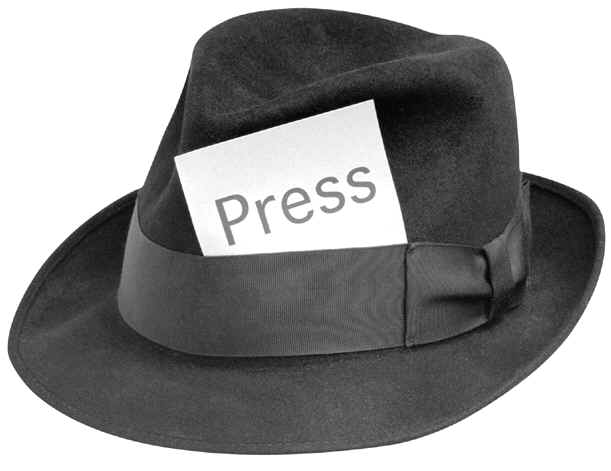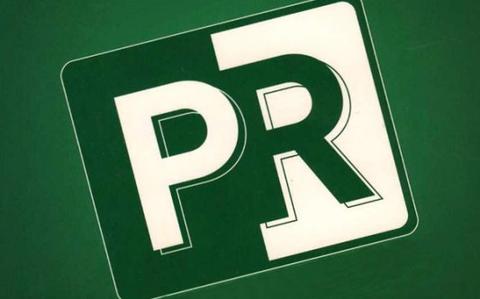posted by AJGpr | on public releations | No comments

What is PR?
In this competitive world, media attention can make a company, organization, product, or individual stand out from the crowd. Having an edge in the market place is crucial to the success of any company, organization, product, or individual. Some companies/individuals choose to invest in costly advertisement campaigns to enhance their public image. Others use public relations to get their message “out there.”
Public Relations, unlike advertising, guarantees a company, an organization, a product, or individual, third-party endorsement by providing media exposure through television, print, Internet, or radio. Such third-party endorsements effectively augment the reputation and image of a company, an organization, product or individual.
Public relations specialists often know as “image shapers” are hired to do just that — shape and maintain the image of a company, organization, or individual in the eyes of the client’s various target audience through media placements. A PR specialist must first understand their clients mission and business goals before launching a media campaign. Once this is established, and the target audience is defined, a skilled PR specialist uses her media contacts to present the company, organization, product, or individual in the best light.
PR is a very effective way to reach and influence a target audience and costs far less than advertising.
posted by AJGpr | on parenting, print media | No comments

My client Dr. Nina Shapiro helps keep our kids safe from choking on Halloween with these great tops featured in Westside Today.
What child doesn’t love Halloween? In fifteen years as a pediatric ear, nose, and throat doctor, Halloween is always my slowest workday. What parent would dare subject their child to a doctor’s appointment, or (perish the thought!) a surgery, on the most sacred of sugar-filled days? Everyone gets involved; newborns don some sort of cute, oversized pumpkin onesy, or get dressed up as a pea in a pod. Toddlers waddle around as bunnies, lions, and teddy bears; preschoolers wear capes or carry fairy wands, and elementary schools are laden with Harry Potters and Wonder Women. And the candy is endless! Sugar is limitless, kids are allowed to scare their teachers (within reason), and school assignments undoubtedly include some sort of crossword puzzle with the word ‘jack-o-lantern’ in it.
All of us know the good part about Halloween; I’ve never met a parent who hasn’t ‘shared’ in their child’s Halloween bounty, and many hope to snap an adorable kid-in-a-costume shot that may work for a holiday card photo. But we must remember the safety issues that arise on this holiday.
All of us rightly worry about losing our child on a dark, crowded street, errant cars injuring children who are running into the street, careless adults on cell phones, not paying attention to their children who are running into the street, or not being able to get our sugar-loaded children to sleep on a school night.
But here’s what I worry about, and, while Halloween day is often a quiet one, Halloween night can be frightful for an airway surgeon because of choking. I don’t mean choking on clothing that is too tight, or external choking by a teenage prankster. I mean choking on regular old candy. The kind your child brings home from preschool, receives from your neighbors, and likely the kind that you are giving out. Choking is the number one cause of accidental death in children under age three years. Yes, it’s true. One child dies every five days in this country from choking on food. Most of these kids are under age three, and most of the food items causing these horrors do not contain warning labels indicating the danger to the under-three crowd.
It’s that ‘magic’ age three, when kids cross the threshold and are allowed to play with toys comprised of ‘small parts’. But what about food with small parts, sticky bits, or unsafe fragments? What was the last food (or candy) label you’ve read with the commonly found toy warning “not for children under three”? Still thinking? Let me know, because those labels don’t exist. And now I’m here to rain on your Halloween parade; no candy is safe for children under three. Label or no label. This includes gum, even if it’s sugarless. Tots can chomp on a thin, plain chocolate bar, if they are seated (so don’t steal those Hershey® bars from your kid’s bag—that’s all they should be allowed to eat).
Children under age three years have neither the motor control, patience, nor airway reflexes to safely eat hard candy, chewy candy, caramel corn, popcorn, or nutty candy, especially on a busy, dark, Halloween night. Older children should be able to do so, but not while walking around trick or treating. Even kids over age four or five years are at high risk for choking on candy if they eat it while in action, and a choking event may go unnoticed if their face is hidden under a Darth Vader mask.
There is plenty of fun to be had on Halloween, while heeding these simple anti-choking tips; awareness is the first and most important step, which is why I’m writing this. So, Happy Halloween! From your neighborhood airway doctor. Let’s meet up at a party or while trick or treating, not in the emergency room.
Dr. Nina L. Shapiro is the Director,Pediatric Otolaryngology and an Associate Professor at the UCLA School of Medicine.
Rewards, Challenges Of Converting To Judaism, Author Jennifer Hanin Talks About Her Experience
2011
posted by AJGpr | on radio, religion | No comments

Jennifer Hanin grew up Catholic, but a few years ago, she replaced her Christmas tree, lights, ornaments and fake snowman with a Menorah and shabbat candles. She’s the co-author of the new book Becoming Jewish: The Challenges, Rewards, and Paths to Conversion. On October 7th she talked with Michel Martin about her conversion, particularly just before the Jewish holiday Yom Kippur. Listen to her story here. For more information about the book or to purchase a copy click here.
posted by AJGpr | on public releations | No comments

Why Choose A Boutique PR Firm?
Does size matter? I always say, “You don’t need a Park Avenue address to have Park Avenue clients.” And bigger isn’t always better, especially when you are talking PR.
A boutique agency, with know-how, media savvy, and contacts, can deliver as much compelling exposure in a wide range of traditional and online media as can a larger firm. In fact, if it is personal attention you are looking for, many say go with the boutique firm.
The advantages of choosing a boutique PR firm, particularly a Los Angeles boutique PR firm, are many. First and foremost, boutique agencies can provide many (if not all) of the same services and deliverables as a larger firm for a lot less money. At a boutique firm you have direct access to the top and get great client service from conception to completion. A boutique firm can focus more of its energy and time on each individual client to provide excellent service.
So how do choose the right boutique PR firm? Start by doing your research and check out their website. So much in public relations happens on line now, they better get that right! Look for client testimonials and media placements. Make a phone call and speak with the owner/CEO. Take a meeting. How do they present themselves? Are their strategies on the same page as your business goals? Ask for a PR proposal that outlines their strategy, media contacts, and of course, cost. Some boutique PR firms work on project based fees, but most ask for a 3-4 month minimum retainer. You will know when the fit is right. Trust your instincts.
posted by AJGpr | on parenting, web | No comments

In her recent blog in the Huffington Post parenting section about Competitive Child Raising, child development expert Betsy Brown Braun calls parents misguided in their notion that children tween-age and even younger are supposed to know their calling.
posted by AJGpr | on public releations, social media | No comments

10 Essential PR Blogs To Read
Keeping up with PR trends and public relations news — what’s new, what’s hot, what’s not – is par for the course for PR specialists. So what’s the most efficient way to enhance your PR knowledge and keep on top of best practices? Read – and blogs today are fast becoming your top source of information. So how do you sort through the hundreds of PR blogs out there? AJGpr has simplified the search and recommends these 10 blogs that offer high quality content. Check them out.
And don’t forget to keep up with these fabulous PR resources
Advertising Age
Brand Channel
Cision
HARO (Help A Reporter Out)
Mashable
Twitter
posted by AJGpr | on public releations, social media | No comments

Why Twitter?
I am the first to admit when Twitter arrived on the scene I didn’t get it. Then I heard Ellen Degeneres talk about “Tweeting” and I became intrigued, but still was not convinced I needed to do it. What were people talking about in 140 characters or less that could possibly matter?
Social Media came about as a way of connecting friends, family and people with similar interests. Then businesses turned to social media to connect with clients or customers who have an interest to their product. Facebook was the rage – and major medium to make these connections.
The Twitter appeared and began (and continues) to attract new users at astounding rates. It rapidly became the second most popular social media site next to Facebook. So I had to learn more – at least I had to open a Twitter account. And I did. It was a bit challenging to get my arms around this new social media format at first. But, I found a few loyal followers and began tweeting about my clients. I now follow over a thousand people and have more than 500 followers myself. And so as a “Tweeter” and a “Follower” here is what AJGpr has learned about Twitter:
- Twitter is easy to navigate and update, link to and promote anything
- Twitter reaches far beyond your inner circle of friends
- One Twitter feed pools all users; anyone can follow anyone else unless blocked
- Twitter is a pure communication tool that allows rapid responsiveness
- You don’t have to be logged into Twitter to get updates; you can just use an RSS reader
- Twitter is very interactive messaging platform with open APIs
Because Twitter delivers the news/the message the fastest of any other social networking medium, it CANNOT be overlooked when launching a PR campaign. You can easily measure your reach with free tools like twittercounter.com and klout.com
So, if you are not already using Twitter or encouraging your clients to use Twitter, start NOW. Anyone can drive ROI with Twitter by engaging followers through compelling content. Simply tweeting can help make a messaging point go viral. Twitter can no longer be ignored. It is an essential tool of any successful social media campaign.
posted by AJGpr | on parenting | No comments

What’s a parent to do when there kids don’t listen. Leading parenting expert and founder of Parenting Pathways, Betsy Brown Braun shares her advice with America Now viewers. Click here and you too can benefit from Betsy’s expertise.
posted by AJGpr | on public releations | No comments

TOP 12 TIPS TO ENGAGE THE MEDIA
Getting the attention of top-tier and targeted media outlets in today’s media-frenzied world is crucial to increasing public interest in any business, product, or person. Media placements, be it a news story, a human-interest story, or a product review, impacts how the consumer gathers knowledge, learns about trends, and makes decisions.
The job of any good PR specialist is to understand the inner-workings of the media so they can recognize what, when, how and to whom to pitch a story that gets media attention and ultimately the attention of consumer.
The good news is that all media outlets need content, be it hourly, daily, weekly, or monthly. So how does the media determine what stories to cover? And what does a PR pro do to engage the media?
Be it Google or Yahoo, a broadcast news program, a radio show, a magazine, a local newspaper, or a blog, media coverage for your client is key to any successful PR campaign.
While there is no magic formula, AJGpr offers some insight and 12 tips on how a PR specialist or publicist can best engage the media.
- First and foremost ask yourself this question. Is your story/news item actually interesting, important, relevant, or “newsy” enough to warrant attention?
- Does the story write its own headline?
- Does it affect a lot of people, or have relevance to a large sector of the population?
- Does it help resolve or answer a current national or local news question?
- Does it offer an interesting argument, debate, or conflict?
- Is it a medical breakthrough or provide answers to recent research, studies, and surveys?
- Is it a human-interest story? Does it evoke humor or sadness? Is it offbeat or quirky?
- Is it a new product that will change peoples’ lives?
- Is it celebrity related? Famous people tend to get more news coverage than the average Joe.
- Do your research. You must be familiar with the media outlet before you pitch. There is nothing that aggravates a producer/editor more than a PR specialist who haphazardly pitches and presents cookie-cutter releases without understanding the needs of the producer/editor.
- Know the media outlets audience. A media outlet or publication that specializes in a topic (e.g. health, women’s interest, sports, parenting) will have a different focus, or different ideas about what is newsworthy and what isn’t. Both localized and national media outlets have their own set of requirements on what they will or will not run.
- Share your pitch with the right producer/editor. Don’t pitch to someone who doesn’t cover the topic you want featured. Find out as much information as you can about them. Know what stories have been produced/published by the producer/editor – and perhaps make mention of that in your pitch.
- Build and honest and casual relationship with producers/editors. Know their first and last name. And most important — respect their time – and when they are on deadline (which is often the case). Bombarding them with email and phone calls will not make them your ally.
- Try to have face time to introduce yourself and your clients when possible. While producers/editors are busy they are often amenable to desk-side meetings. This personal rapport helps you establish trust and long-term relationships.
- Write pitches that are personal and pertinent. Pitches must have a unique/simple angle to avoid ending up in the trash. Remember, the media needs good stories, but be wary of sounding too much like a sales pitch.
- Offer a compelling quote a snazzy sound bite that will stick in the minds of their viewers, listeners or readers.
- Using visuals — photos/ videos that are high quality can enhance your written pitch.
- Offer samples – a book, a product. But send ONLY if requested. Unsolicited books/products often remain unopened.
- Create compelling subject titles when pitching by email. Producers/editors get inundated with email. Make yours stand out. An enticing subject is your next priority after your pitch has been crafted.
- Follow-up is key. Today, producers and editors tend to choose email over the phone to respond to pitches. But if your email pitch falls on deaf ears, don’t be afraid to follow-up by phone and then again by email.
- Once a producer/editor is engaged or shows interest in your story, respond to there query or request for product promptly.
- Always be gracious. It is never too much to say thank you. After a segment has aired or story makes it to print. Draft a quick note of thanks to the producer/editor. This will help secure long-lasing relationships with your media contacts.
Follow these 12 tips and you are on your way to getting media attention for your client managing a successful PR campaign.
posted by AJGpr | on public releations, social media | No comments

How to Harness the Power of Social Media For Your PR Campaign
We live in a hyper-connected world — Twitter, Facebook, LinkedIn,Google+, and YouTube, and the value of maintaining a strong online presence can not be underestimated when planning a marketing or PR campaign. Social media is not only a powerful tool for individuals and organizations trying to achieve their business objectives, it is also an imperative element in the development of any effective business strategy.
Social media has changed the way the consumer talks about and interacts with brands. Whether on a website, on Facebook, or on Twitter, these channels are a breeding ground for conversations and their popularity among today’s consumer keeps growing as more people turn to the Internet to consume news. Since conversation and feedback can be channeled and encouraged, social media is rapidly delivering a new standard of interacting.
And while traditional media placements (TV, radio, and print) still have value, consumer opinion and rating, through social media, is considered an important source of credible, reliable information. Today, word-of mouth, through online channels, is often given even more consideration than third-party media in making purchasing decisions.
Having a large online presence with fans and followers can significantly impact on how your business interacts with consumers and ultimately attracts more clients.
The bottom line is you should pay attention to social media. Knowing where the conversations are taking place and how to use social media for your campaigns should be at the top of every PR campaign.
Recent Posts

Online Dating: The Grown Woman’s Guide || Read More
January 9, 2019

“Some things are non-negotiable,” says Parenting Expert, Betsy Brown Braun || Read More
December 20, 2018

Cheating in a Relationship: Does Kissing Count? || Read More
December 20, 2018

Pilates Can Help Improve Your Golf Game || Read More
May 12, 2017

Atomic Pilates and Fitness – The Workout That Your Body Needs || Read More
April 17, 2017

